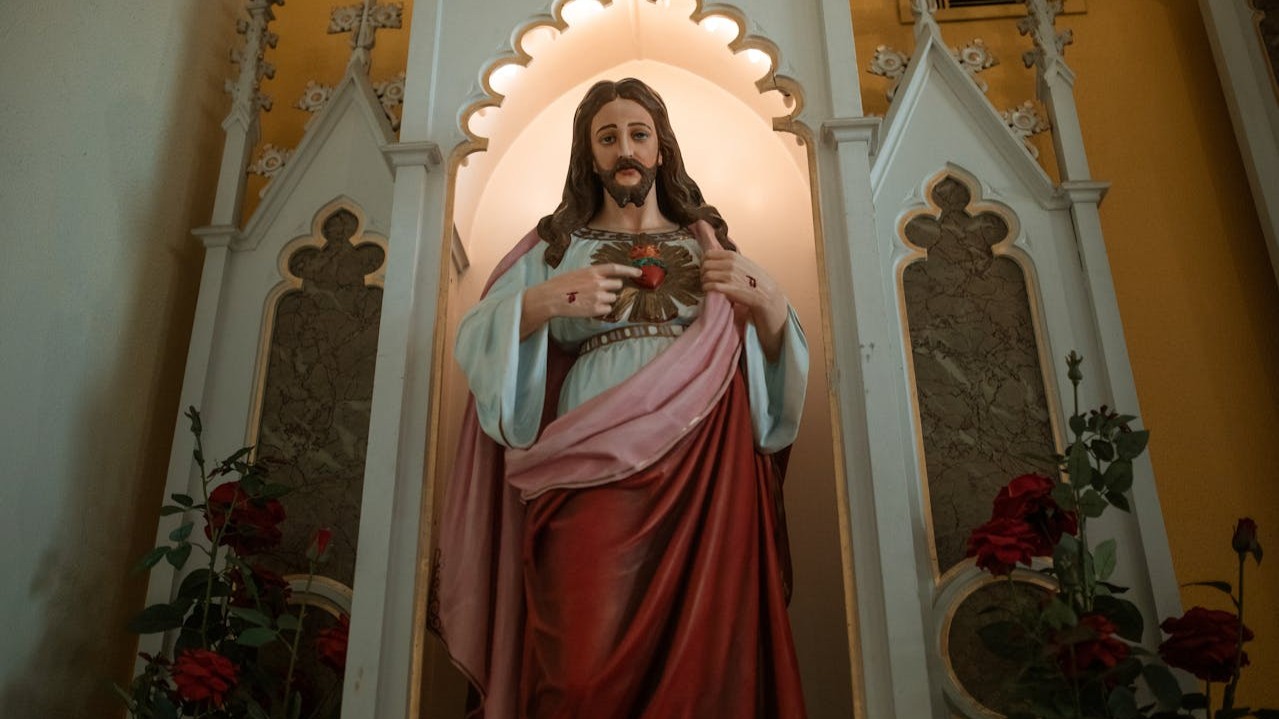Introduction
Christian churches share the conviction that human life has dignity and that marriage and family deserve protection. Modern fertility treatments touch these principles directly. Accordingly, church evaluations range from clear prohibitions through strict conditions to case-by-case openness.
This article sets out the main lines: Where are the commonalities, and where are the genuine areas of tension? What does this mean in concrete terms for sperm donation, IUI/IVF, cryopreservation, genetic testing or surrogacy – and what role do transparency and the child’s origin play?
Framework & guiding questions
The focus here is not medical basics but religious orientation. Three questions recur in nearly all traditions: Do the methods separate procreation from the marital union? Is the embryo protected and not instrumentalised? Are origin and later disclosure to the child secured rather than relying on anonymous models?
Anyone considering sperm donation or ART moves between personal conscience, the official teaching of their own church and the actual pastoral practice on the ground.
Denominational overview
Roman Catholic and Orthodox Churches generally reject third-party gametes and surrogacy and insist on strict embryo protection. Protestant churches are plural: from strict positions through embryo-sparing compromises to conditional openings on a case-by-case basis. Free churches and evangelical movements tend towards a very high level of embryo protection. The Church of Jesus Christ of Latter-day Saints allows technologies within marriage but discourages third-party gametes. Jehovah’s Witnesses emphasise conscience decisions, rejecting third-party gametes and the destruction of embryos.
Roman Catholic Church
Magisterial texts such as “Donum vitae” and “Dignitas personae” emphasise: conception belongs within the marital union; embryos are not to be selected, discarded or instrumentalised. Medical assistance that supports natural fertility is welcomed so long as it does not dissolve the unity of marriage and conception.
In practice this means: third-party sperm donation and surrogacy are rejected. Homologous IVF is also problematic when it replaces the conjugal act or involves surplus embryos. Pastorally, it is simultaneously stressed that children conceived via ART are fully received and deserve protection.
Further reading: Donum vitae · Dignitas personae
Orthodox Churches
Orthodox statements link the sacramental character of marriage with pronounced embryo protection. Common guardrails include: spouses’ own gametes only, no surrogacy, as few surplus embryos as possible, great restraint with cryo and selection.
At the same time there are regional differences and pastoral discretion. In some contexts strictly homologous procedures are considered only where embryo destruction is excluded.
Further reading: Foundations of the Social Concept (Chap. XII)
Protestant Churches
Historic churches such as Lutheran, Reformed and Anglican traditions often work with a balancing of goods: understanding of marriage, protection of vulnerable parties, transparency towards the child and minimising risks to embryos. This gives rise to graded positions – from clear boundaries to nuanced openings under conditions.
In practice this means: more frequent use of embryo-sparing protocols, emphasis on open or semi-open donation models, pastoral accompaniment and ethics committees. At the same time there are congregations and synods that judge more restrictively.
Further reading: CPCE: Ethics of Reproductive Medicine
Free Churches & evangelical–pentecostal
Many free churches place particular emphasis on protecting every embryo. Third-party gametes are mostly rejected. IVF is discussed – if at all – only in variants that strictly avoid surplus embryos and selection. Prayer, examination of conscience, medical second opinions and adoption as an alternative are often recommended.
Illustrative here are positions of conservative associations that warn against common IVF protocols with surplus embryos and call for transparency instead of anonymity.
Further reading: Southern Baptist Convention (Resolution 2024)
Church of Jesus Christ of Latter-day Saints (LDS)
LDS in principle permits reproductive technologies for married couples but discourages third-party gametes as well as donating one’s own gametes. Decisions should mature in responsibility, prayer and pastoral accompaniment. For complex questions, recourse to church leadership is recommended.
Further reading: General Handbook – Policies & Guidelines
Jehovah’s Witnesses
Jehovah’s Witnesses understand themselves as a Christian religious community. For family planning they stress conscience decisions within marriage. Third-party gametes are generally rejected because they touch the unity of marriage. A strong emphasis on embryo protection leads to reservations about procedures in which embryos could be selected or discarded.
In practice, couples often seek pastoral advice from elders. Decisions are made at the level of the individual couple, coupled with the expectation to harm no one and not to compromise one’s faith.
Key themes
Origin and openness: Many churches advise open or semi-open models and reliable documentation. Anonymous donation is often viewed critically because it complicates origin disclosure and kinship management.
Embryo protection: Catholic, Orthodox and many free-church voices reject embryo destruction, selective reduction and utilitarian selection. In parts of the Protestant landscape, embryo-sparing compromises are sought.
Surrogacy: Rejected in most traditions, partly for reasons of child welfare, partly due to the separation of pregnancy and legal parenthood.
Pastoral care and conscience: Even where openings exist, formation of conscience is central. Conversations with pastoral workers, ethics bodies and careful medical information are recommended.
Historical development
With the advent of modern reproductive technologies since the 1970s, churches have systematised their positions. Catholic documents formulated clear guardrails early on. Orthodox churches developed social-ethical texts with strong embryo protection. Protestant churches established guidelines for case-by-case balancing. Free churches and evangelical networks have recently sharpened profiles on IVF and embryo ethics.
At the same time, local practice has remained diverse. Some congregations offer more pastoral accompaniment and differentiation, others draw stricter boundaries. This explains why affected couples have very different experiences.
Practical decision-making
First, review the official texts and concrete pastoral practice of your own church. Second, sort medical options according to embryo-sparing criteria. Third, prefer transparent models without exploitation and plan for later disclosure to the child. Fourth, form your conscience – informed, realistic and responsible.
Comparison table
On small screens you can swipe the table sideways. The first region is focusable so screen reader and keyboard users can scroll horizontally with ease.
| Tradition | Third-party sperm donation | Homologous IUI/IVF | Transparency instead of anonymity | Embryo protection | Cryopreservation | Genetic testing | Surrogacy | Practice/pastoral care |
|---|---|---|---|---|---|---|---|---|
| Roman Catholic | Rejected | Problematic where it replaces the conjugal act | Openness recommended; anonymity viewed critically | Very strict; no discarding/reduction | Restrained, especially for embryos | Largely rejected where it promotes selection | Rejected | Support for natural fertility |
| Orthodox | Mostly rejected | Limited scope: strictly homologous, without surplus | Openness preferred | Very strict; no destruction | Highly restrained | Predominantly critical | Rejected | Examination of conscience, spiritual accompaniment |
| Protestant (Luth./Reformed/Anglican) | Range; often open with conditions | Often permitted after balancing | Tendency towards open/semi-open models | From moderate to strict | Range; pragmatic | Conditional; contested | Predominantly critical | Pastoral care, ethics bodies, child’s welfare |
| Free churches/evangelical–pentecostal | Mostly rejected | Only conceivable if embryo-sparing | Openness supported | Very strict | Highly restrained | Mostly rejected | Rejected | Warning about surplus; adoption as option |
| Church of Jesus Christ (LDS) | Discouraged | In principle possible for married couples | Transparency recommended | Caution; ethical weighing | Caution; context-dependent | Case by case | Problematic; case by case | Prayer, pastoral accompaniment |
| Jehovah’s Witnesses | Rejected | Possible, but strictly conscience-bound and embryo-sparing | Transparency towards the child preferred | Very strict; no destruction/selection | Restrained, especially for embryos | Restrained | Rejected | Decision within the couple; advice from elders |
Note: This overview simplifies. Decisive are official texts, regional practice and the pastoral accompaniment of the respective church or community.
RattleStork – planning responsibly in a Christian context
RattleStork supports couples and individuals in organising fertility steps with sensitivity to faith, transparency and good documentation – for example, planning embryo-sparing protocols and, where ecclesially and legally appropriate, choosing open rather than anonymous models. Verified profiles, secure exchange and tools for appointments, notes, cycle and timing entries and private checklists help structure decisions in line with one’s conscience. RattleStork provides no medical or theological advice and does not replace pastoral accompaniment.

Conclusion
Christian traditions set clear accents: marriage, family and the protection of unborn life rank highly. However, evaluations of sperm donation and assisted reproduction vary noticeably. Good decisions emerge when official teaching, local pastoral practice, transparent models and embryo-sparing medicine are brought together and integrated into a mature decision of conscience.

